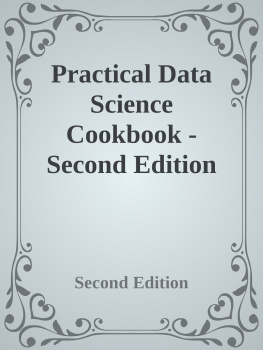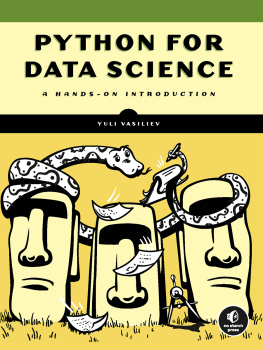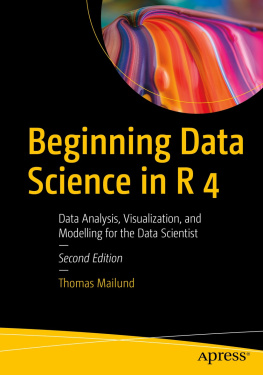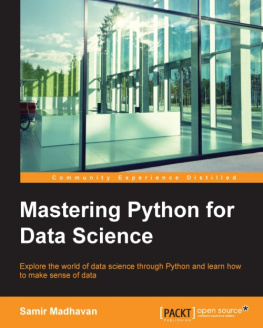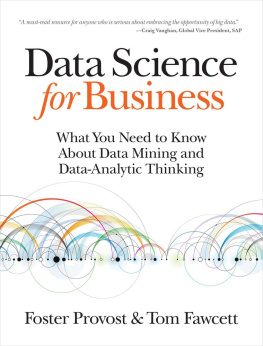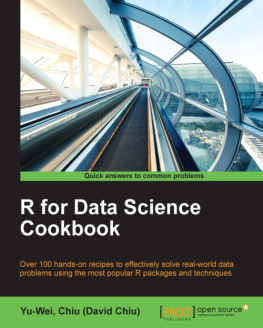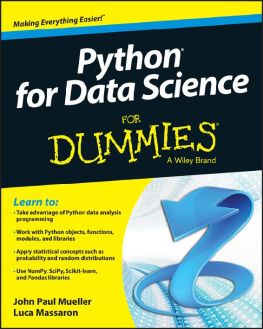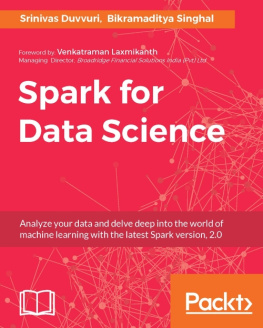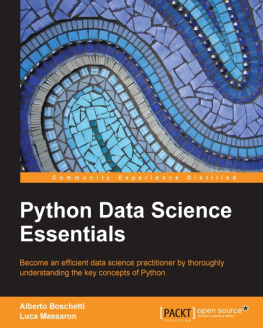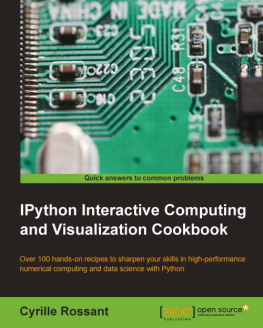Prabhanjan Tattar - Practical Data Science Cookbook: Data pre-processing, analysis and visualization using R and Python
Here you can read online Prabhanjan Tattar - Practical Data Science Cookbook: Data pre-processing, analysis and visualization using R and Python full text of the book (entire story) in english for free. Download pdf and epub, get meaning, cover and reviews about this ebook. year: 2017, publisher: Packt Publishing, genre: Home and family. Description of the work, (preface) as well as reviews are available. Best literature library LitArk.com created for fans of good reading and offers a wide selection of genres:
Romance novel
Science fiction
Adventure
Detective
Science
History
Home and family
Prose
Art
Politics
Computer
Non-fiction
Religion
Business
Children
Humor
Choose a favorite category and find really read worthwhile books. Enjoy immersion in the world of imagination, feel the emotions of the characters or learn something new for yourself, make an fascinating discovery.
- Book:Practical Data Science Cookbook: Data pre-processing, analysis and visualization using R and Python
- Author:
- Publisher:Packt Publishing
- Genre:
- Year:2017
- Rating:5 / 5
- Favourites:Add to favourites
- Your mark:
Practical Data Science Cookbook: Data pre-processing, analysis and visualization using R and Python: summary, description and annotation
We offer to read an annotation, description, summary or preface (depends on what the author of the book "Practical Data Science Cookbook: Data pre-processing, analysis and visualization using R and Python" wrote himself). If you haven't found the necessary information about the book — write in the comments, we will try to find it.
Over 85 recipes to help you complete real-world data science projects in R and Python
About This Book- Tackle every step in the data science pipeline and use it to acquire, clean, analyze, and visualize your data
- Get beyond the theory and implement real-world projects in data science using R and Python
- Easy-to-follow recipes will help you understand and implement the numerical computing concepts
If you are an aspiring data scientist who wants to learn data science and numerical programming concepts through hands-on, real-world project examples, this is the book for you. Whether you are brand new to data science or you are a seasoned expert, you will benefit from learning about the structure of real-world data science projects and the programming examples in R and Python.
What You Will Learn- Learn and understand the installation procedure and environment required for R and Python on various platforms
- Prepare data for analysis by implement various data science concepts such as acquisition, cleaning and munging through R and Python
- Build a predictive model and an exploratory model
- Analyze the results of your model and create reports on the acquired data
- Build various tree-based methods and Build random forest
As increasing amounts of data are generated each year, the need to analyze and create value out of it is more important than ever. Companies that know what to do with their data and how to do it well will have a competitive advantage over companies that dont. Because of this, there will be an increasing demand for people that possess both the analytical and technical abilities to extract valuable insights from data and create valuable solutions that put those insights to use.
Starting with the basics, this book covers how to set up your numerical programming environment, introduces you to the data science pipeline, and guides you through several data projects in a step-by-step format. By sequentially working through the steps in each chapter, you will quickly familiarize yourself with the process and learn how to apply it to a variety of situations with examples using the two most popular programming languages for data analysisR and Python.
Style and approachThis step-by-step guide to data science is full of hands-on examples of real-world data science tasks. Each recipe focuses on a particular task involved in the data science pipeline, ranging from readying the dataset to analytics and visualization
Prabhanjan Tattar: author's other books
Who wrote Practical Data Science Cookbook: Data pre-processing, analysis and visualization using R and Python? Find out the surname, the name of the author of the book and a list of all author's works by series.

